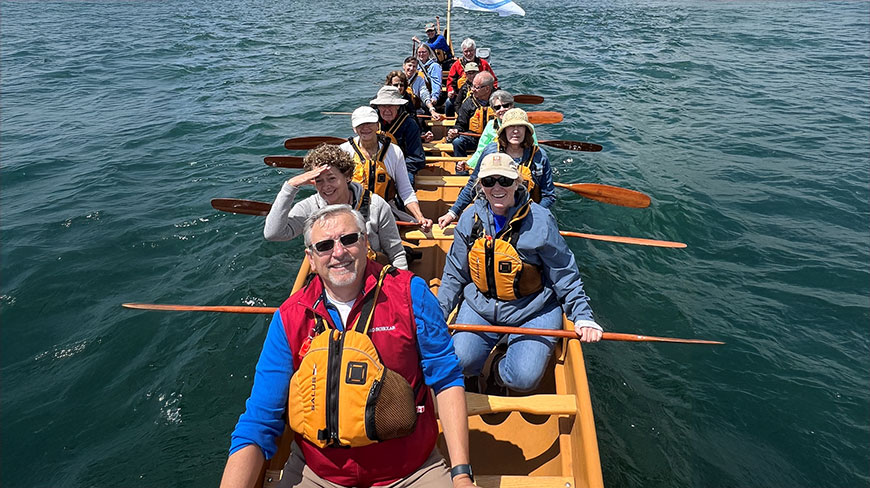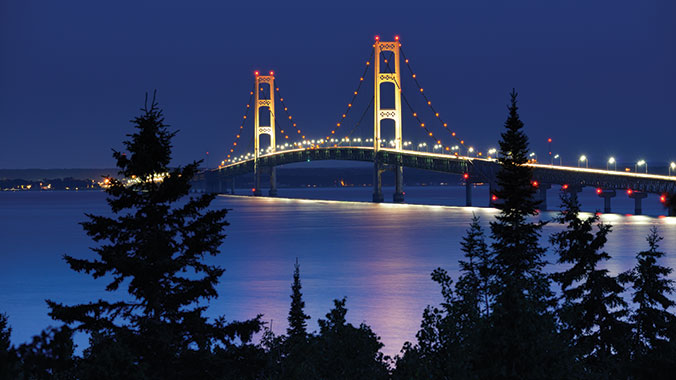Mackinac Island (Images of America)
by Tom North
From historical richness to unparalleled natural beauty, Michigan's Mackinac Island is the crown jewel of the Great Lakes, unique in America. Native American visitors preceded French explorers and missionaries of the 17th century. Forts were established and battles fought between American and British soldiers. Commerce, including fur trading and fishing, later surpassed military importance, in turn yielding to the tourism industry that has dominated the past 150 years. Includes black-and-white photos.
Mackinac Island: Up Close, and Personal
by Dennis O. Cawthorne
This entertaining account of Mackinac Island is equal parts memoir and history as Cawthorne sets his experiences (as a carriage driver, chamber of commerce manager, state legislator, restaurateur and attorney) within the island’s last 50 years.
Masters of Empire, Great Lakes Indians and the Making of America
by Michael McDonnell
In his well-received history, McDonnell explores the Great Lakes region from the perspective of the Anishinaabeg tribe that controlled Mackinac Island, an essential hub between Lake Michigan and Lake Huron. His study discusses rivalries, trade networks, kinship and the effects of the American Revolution.
Moon Michigan (Travel Guide)
by Paul Vachon
Moon Michigan reveals the best of the Great Lakes States’ charming small towns, vibrant urban hubs, and vast, untouched wilderness. Inside this guide you’ll find full coverage of Michigan, from Detroit and Ann Arbor to Mackinac Island and the Upper Peninsula.
My Heart Belongs on Mackinac Island: Maude’s Mooring
by Carrie Fancett Pagels
Although the Winds of Mackinac Inn has been in her mother’s family for generations, Maude Welling’s father refuses to let her run it without the guidance of a husband. So she seeks to prove her worth and independence by working incognito as a maid at the Grand Hotel. Undercover journalist Ben Steffans, posing as a wealthy industrialist, pursues a story about impoverished men chasing heiresses at the famed hotel. While undercover, he becomes attracted to an intriguing maid. By an act of heroism Ben endears himself to the closed-mouthed islanders—including Maude—and he digs deep for his story. But when scandal threatens, will the growing love between Maude and Ben be scuttled when truths are revealed?
Perimeter, A Contemporary Portrait of Lake Michigan
by Kevin J. Miyazaki
An insightful series from photographer Kevin Miyazaki’s 1,800-mile journey around Lake Michigan. The work gives much to peruse and ponder from faces and outfits to tools and toys, but mostly the lake itself.
Sault Saint Marie (Images of America: Michigan)
by Deidre Stevens
Sault Ste. Marie was destined to be a gathering place. Native Americans relied on the rapids of the St. Mary’s River, which links two Great Lakes, Superior and Huron, for a year-round supply of fish. Its population swelled in the summer—a tradition that continued as French traders came to turn in their pelts and celebrate the end of another long, hard winter. After the Revolutionary War, the Sault, as it is called, became a community divided on national lines, with the United States holding one shore and Canada the other. Eventually man conquered the rapids, and today the Soo Locks transport millions of tons of freight annually to ports all over the world. Tourists are drawn by the cool breezes off the lake and the sight of steel behemoths passing almost close enough to touch.
The Death and Life of the Great Lakes
by Dan Egan
Egan explores the past, present, and future of the Great Lakes and their ecologies using insightful research and political commentary.
Traverse City, Michigan: A Historical Narrative, 1850 – 2013
by Richard Fidler
One hundred-sixty-five years ago the Boardman River emptied its waters into the West Arm of Grand Traverse Bay amid a vast forest of white pines, red pines, and oak trees. But for occasional villages of Odawa Indians, the area was largely uninhabited, the currents of history taking white settlers to places south and west of this isolated place at the end of a long peninsula. Sixty years later, the forests had disappeared, replaced by factories, vast retail stores made of brick, an Asylum, churches, schools, and residences as a primitive settlement grew into a small town. In time, the community shrank as residents moved away in search of better lives elsewhere in Michigan, many of them moving to the more prosperous southern part of the state. Still, change was not done: people began to return, seeking the grace the land and water offered them as they reinvented the basis upon which their lives were built. is is the story of Traverse City, Michigan and it is the story of this book.











